The Sword And The Stylus
The Baburnama, one of the greatest memoirs in any language and of any age, is a testament to humanity in which the personal becomes universal
 William Dalrymple
William Dalrymple
 William Dalrymple
William Dalrymple
 |
12 Nov, 2020
|
12 Nov, 2020
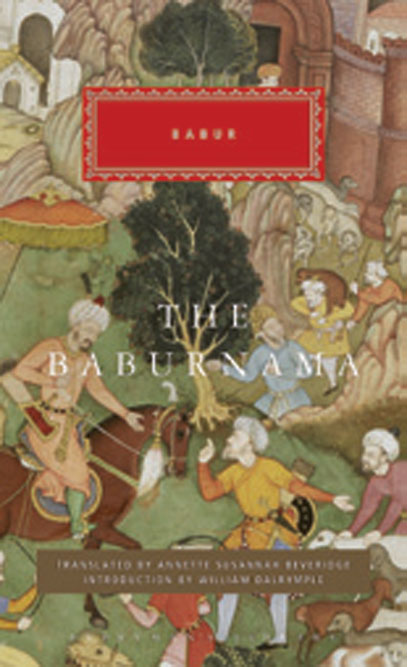
/wp-content/uploads/2020/11/SwordStylus1.jpg)
Timur, Babur and Humayun (c 1630). Timur sits in the centre. He hands the crown to Babur (seated to his right). On his left is Humayun
THE SECOND PART of the Baburnama, which deals with Babur’s period as a fugitive after his defeat and exile at the hands of the Uzbeks, is in literary terms, the most successful. Fugitive, homeless and utterly bewildered, ‘not knowing where to go, or where to stay, our heads in a whirl,’ Babur was forced to turn to brigandage.
His ragged party headed south, eventually, sadly, taking the ferry over the Oxus, knowing what little chance there was of them ever returning to their homeland. Then they crossed the high passes into the snowy wastes of the Hindu Kush. They had no plan nor destination, other than to put as much space as possible between themselves and their Uzbek pursuers. ‘Those who, hoping in me, went with me into exile, were small and great, between two and three hundred. They were almost all on foot, had walking staves in their hands, rough boots of untanned leather on their feet, and long coats. So destitute were we that we had but two tents amongst us; my own tent used to be pitched for my mother.’
But as things fell apart behind him in Farghana, and the Uzbeks hunted down every last surviving Timurid north of the Oxus, ‘one man after another came in,’ to join Babur’s party. Throughout, Babur remained active and resilient, realising that he could not afford to give way to despair: ‘When one has pretentions to rule,’ he wrote, ‘and a desire for conquest, one cannot sit back and watch if events do not go right once or twice.’ What began as a sprawling refugee column slowly grew into a new Timurid army, as exiled tribal chief after tribal chief joined his ranks. By the following Nou Ruz, as the first torrents of spring snow-melt bubbled down from the heights of the Hindu Kush, Babur’s column had swelled to a staggering 20,000 armed men.
That year, 1504, Babur finally had a lucky break. The rich and cosmopolitan city of Kabul, the centre of the rich caravan trade between India and Central Asia, was then controlled by an unpopular ruler, widely considered a usurper. The local Afghan chiefs were ready for a change. To their own surprise, Babur’s now sizeable army took the city without a battle, after Babur lined up his army in disciplined ranks below the Bala Hisar: ‘Those inside the fort became much perturbed,’ he wrote, ‘and made an offer of submission and surrender.’
Once inside the battlements, Babur quickly called in more of his fractious Timurid cousins to bolster his numbers. These were joined by other refugee tribes and clans who had also been displaced by the Uzbek advance. Babur also made a coalition of alliances with those Afghans who were prepared to accept his rule while using brutal terror tactics—raids, impaling and enslavement—on those, such as the independent Hazara Turkmen of Bamiyan, who refused to do so.
Before long, Babur was laying out charbagh Persian gardens and remodelling his new base according to his tastes, introducing bananas and sugar cane into the area, and setting up a new Timurid court-in-exile within the walls of the Bala Hisar. Later in life, Babur looked back on his time in Kabul as his happiest moments since childhood. His years of wandering and anxiety were over, and while he distrusted and sometimes despised the Afghans he now ruled, he greatly loved the climate and the reassuringly familiar landscape of their land. Many of his most inspired descriptive passages are devoted to the beauties of his new Afghan safe haven. It was, moreover, the first time in years that he was able to relax. He hunted, fished, hawked and held parties on the green hills around the city. He found time to write poetry and work on his memoirs. He even developed his own form of calligraphy, the khatt-i-Baburi . It was at this period too that he fathered his children, including, in 1508, his son, Humayun.
For Babur, it was also a time of experimentation in life’s different pleasures. He investigated the effects of opium and hashish and recorded that ‘while under its influence, wonderful fields of flowers were enjoyed… sheets of yellow and sheets of red. We sat on a mound near the camp to enjoy the sight.’ On one occasion, he took a party of nobles on a boating trip, not realising that at one end of the boat, his friends were eating hashish while at the other, they were drinking wine: ‘A hashish party never goes well with a wine party,’ he wrote afterwards.
In 1526, India, like Central Asia, was undergoing a period of political fragmentation. This diffusion of authority, like that in Oxiana, was caused by the vacuum left by Timur’s conquests. The collapse of the paramount power in South Asia, the Tughluk’s Delhi Sultanate, which at its peak extended from the Indus southward through most of India, had left the subcontinent fragmented and vulnerable to further invasion
There was now only one other Timurid court left, and this was the greatest of them all: that of Herat, in western Afghanistan, now ruled by his cousin, Husayn Baqara. In 1506, Babur decided to pay a visit to his relatives. For the first time in his life, he found himself feeling like an unsophisticated, mud-booted provincial. His cousins paid little attention to the unfashionable new arrival and seemed unimpressed by his new conquests—so much so that he had, humiliatingly, to complain to them that ‘to be laggard in shewing me respect was unreasonable.’ To the young warlord who only two years previously had been a vagrant, the clothes and fashions of his Herati cousins seemed dazzling, their manners sophisticated, their tastes refined. At one party, they served roast goose, which Babur did not know how to eat:
‘As I was no carver or disjointer of birds, I left it alone. ‘Do you not like it?’ inquired the Mirza. Said I, ‘I am a poor carver.’ On this he at once disjointed the bird and set it again before me. In such manners, he had no match. At the end of the party, he gave me an enamelled waist-dagger.’
On another occasion, his cousins were listening to the music of flutes and dulcimers, singing, dancing and drinking wine, something Babur had never tasted: ‘I knew nothing of its cheer and pleasure.’ His cousins mocked him for his abstemiousness:
‘The party was altogether elegant… It crossed my mind now, when the Mirza’s were so pressing and when too we were in a town so refined as Herat, ‘Where should we drink if not here? Here where all the chattels and utensils of luxury and comfort are gathered and in use.’ So saying I resolved to drink wine; I determined to cross that stream… The social cups were filled; the guests drank down the wine as if it were the water-of-life; [and] when it mounted to their heads, the party waxed warm.’
Babur was thoroughly dazzled by the court of Husayn Baqara and the brilliant Persianate cultural world he had created around him. ‘His was a wonderful age,’ he wrote in his diary, looking back. ‘In it, Khurasan and Herat was full of learned and matchless men… In Herat a man can’t stretch his leg without touching a poet’s backside.’ Babur toured the sights, visiting the shrine of the Gaza Gah and relished the beauty of a pavilion decorated with murals depicting the heroic deeds of Abu Sayyid Mirza.
Babur in fact enjoyed himself so much that he lingered too long into autumn, and nearly died in the terrible blizzards that dogged his return to Kabul over the passes of the Hindu Kush. But it was as well he did not stay on: the following spring, at the very beginning of the campaigning season, Shaybani Khan and his Uzbeks stormed Herat, slaughtering Babur’s cousins: ‘He even maltreated the prince’s wives and children.’ These included his sister Khazada, his only full sibling, who was forced to marry and bed the family’s arch-enemy, Shaybani Khan himself. According to the historian Khwandamir, ‘the delicate beauties of the inner sanctum of inviolability were taken captive and tormented by the merciless Uzbeks, and Venuses of the chambers of chastity were left by ravaging Mongols to wander destitute in the lanes and bazaars.’
These events not only saddened Babur, they left him the last Timurid ruler standing. In 1508, in recognition of this, he decided formally to take on Timur’s legacy and adopt his Persian title, Padshah. Kabul was now full of refugee Timurid nobility looking to him for leadership. Babur made one last, failed attempt at recapturing Samarkand, in alliance with the Persian Shah Ismail Saffavi, the founder of the Saffavid dynasty. This was a humbling episode during which Babur briefly abjured orthodox Sunni Islam and took on the clothing of the Shias, including the 12-pointed hat, as the price of Persian support—but entirely without any lasting result. Finally, giving up on Oxiana, he turned his gaze southwards, to Hindustan.
Soon after, Babur descended the Khyber Pass and made his first exploratory raids on Kohat and Bannu, near Peshawar. The following year he crossed the Indus and raided deep into the Punjab. ‘Ever since we came to Kabul,’ he wrote, ‘it had been in mind to move on Hindustan… The sun being in Aquarius… we rode out of Kabul for Hindustan. Another world came into view—other grasses, other trees, other animals, other birds, and other manners and customs of clan and horde…. Once the waters of Sind are crossed, everything is in the Hindustan way.’
Other raids followed. Increasingly however, he did not just intend to plunder Hindustan but to rule it. Timur had conquered the Delhi Sultanate and the successors of the defeated Tughluks had, for several generations, acknowledged the Timurids as overlords. Babur needed to create an empire rich enough to support his family and to save his dynasty from extinction. Timur’s overlordship of Delhi, he felt, gave him the right to claim what he felt was rightfully his. In 1519, he formally made his request to the new Delhi sultan, Ibrahim Lodhi: ‘For the sake of peace, I sent him a goshawk,’ he wrote, ‘and asked for the countries which from of old have depended on the Turk.’ Ibrahim gave the envoy no reply. Babur began to make preparations, launching a further series of plundering raids into the Punjab and acquiring a set of the latest muskets, cannon and mortars, as well as a skilled Ottoman Turkish artilleryman, Ustad Ali, to work them.
Then, in 1522, an irresistible opportunity presented itself. Daulat Khan was a disgruntled Indo-Afghan nobleman whom Ibrahim Lodhi had appointed Governor of the Punjab. Angered at the brutal and autocratic sultan’s violent treatment of his nobility, many of whom he had arrested and killed, and afraid that he might be next, Daulat Khan sent an envoy to Kabul, inviting Babur to take possession of the throne of Hindustan. The timing was perfect.
‘At the dawn of the day, Babur prayed in the garden for a sign of victory in Hindustan, asking that it should be a gift of the fruits of that land. It so happened that Daulat Khan had sent him, as a present, half-ripened mangoes preserved in honey; when these were set before him, he accepted them as a sign, and from that time forth made preparations for a move on Hindustan.’
Finally, in late 1525, aged forty-two, Babur rode out: ‘I put my foot in the stirrup of resolution,’ he wrote, ‘set my hand on the rein of trust in God, and moved forward against Sultan Ibrahim, son of Sikander Lodi Afghan, whose standing army was called a lakh (100,000), whose elephants and whose begs’ elephants were about 100.’
IN 1526, INDIA, LIKE Central Asia, was undergoing a period of political fragmentation. This diffusion of authority, like that in Oxiana, was caused by the vacuum left by Timur’s conquests. The collapse of the paramount power in South Asia, the Tughluk’s Delhi Sultanate, which at its peak extended from the Indus southward through most of India, had left the subcontinent fragmented and vulnerable to further invasion.
In the South, Vijayanagar, the great Hindu City of Victory, was then approaching the peak of its power, and controlled almost all the lands of peninsula India beyond the river Tunghabadra. It was the richest kingdom in India. In 1443, eighty years before Babur began dreaming of an Indian empire, it had been visited by the ambassador of Babur’s great uncle, Shah Rukh.
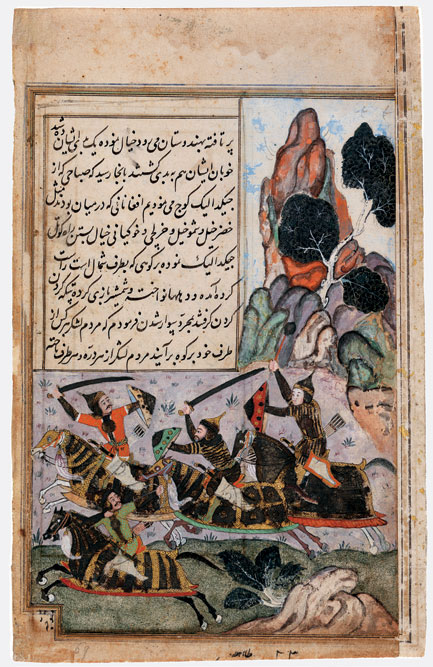
‘The city of Vijayanagara [modern Hampi] simply has no equal in the world,’ wrote Abdur Razzak Samarqandi. ‘It is such that the pupil of the eye has never seen a place like it, and the ear of intelligence has never been informed that there existed anything to equal it in the whole world… It is a city of enormous magnitude and population, with a king of perfect rule and hegemony, whose kingdom stretches more than a thousand leagues. Most of his regions are flourishing, and he possesses three hundred ports. He has a thousand elephants with bodies like mountains and miens like demons…. The Empire contains so great a population that it would be impossible to give an idea of it…’
Abdur Razzak was astonished at the extraordinary personal wealth visible everywhere—‘especially the profusion of jewellery worn by men and women of every social class, and the sophistication of the jewellers: stalls selling pearls, rubies, emeralds and diamonds were, he says, doing strong business, drawing in traders from across the globe.’
Vijanyanagara was not the only kingdom of dazzling wealth in India. North of the City of Victory, the Deccan was fragmented into a patchwork of small but culturally dynamic Shia Muslim Sultanates, the most cosmopolitan of which was Bijapur. The Nujum al Ulum, or Stars of Science, is a typical Bijapuri production of the period. It is a grimoire, or book of spells, which brings together the astrology of mediaeval Islamic and Hellenistic worlds and mixes it with the mystical Indic astrology of Vijayanagar. The Nujum is full of invocations of spirits and demonesses as well as esoteric musings on such subjects as the celestial levels, the nature of angels, sorcery and the signs of the Zodiac. It blends astronomy, mysticism and politics in a text that gives a remarkably heterodox vision of mediaeval Indian courtly culture. Hindu goddesses are placed next to Muslim astronomical symbols. Tantric methods of summoning gods into mandala diagrams are crossed with Middle Eastern techniques for summoning djinns. There follows a concluding section of love spells, one for each day of the week.
In the embattled north, once the centre of power and patronage and scholarship and high Indo-Islamic culture, there was nothing to match this. A much-diminished and culturally unremarkable Delhi Sultanate, now controlled from Agra by the Lodhis, squatted amid the ruins of earlier more impressive dynasties. Their energies were spent battling with rival Afghan claimants to the throne, such as the Sharquis of Jaunpur, many whose clans had taken advantage of the defeat of the Lodhis to descend into the Indian plains like ‘ants and locusts.’
Arriving in the middle of the dry and dusty summer heats, Babur was initially unimpressed by his new kingdom, although he was thrilled by its riches: ‘the towns and country of Hindustan are greatly wanting in charm,’ he grumbled. Worst of all were jackfruits, which tasted like the ‘revolting intestines of sheep’. On the plus side, ‘Hindustan is a large country with lots of gold and money’
In the 1520’s, the paranoid and notably brutal Ibrahim Lodhi unwisely began alienating his nobility by murdering any he suspected of plotting against him: ‘He has put 23 of them… to death without any cause… Some he suspended from walls, and caused others to be burned alive.’ ‘One group he blew up by placing charges of gunpowder under the building in which they were feasting.’ The reports that reached Babur were that few outside the Lodhi inner circle would be prepared to die for this unpopular tyrant.
Babur’s fifth and final expedition into Hindustan began in the autumn of 1525. He rode south at the head of an army of eight thousand men, including his Turkish matchlock and artillerymen. Crossing the Indus at Attock in mid-December, he advanced slowly forward, capturing Lahore without resistance. It was only in April that he came face to face with Ibrahim Lodhi, on the fields of Panipat, one hundred miles north of Delhi.
Ibrahim outnumbered him, four to one, but Babur was now an experienced general and used on Ibrahim the same flanking cavalry movement that had led to his own defeat by Shaybani Khan outside the walls of Samarkand thirty years earlier. Moreover, he had Ustad Ali’s artillery, which he had mounted on 700 farm carts placed bound together into a barricade at the front of his forces. Cannon had been known in the Deccan for some time, but these were far more sophisticated than anything currently available in northern India. Babur provoked Ibrahim Lodhi to attack his position, and then unleashed his firepower. The artillery wiped out the cream of Ibrahim’s cavalry and panicked his elephants. Babur then unleashed his own cavalry who rolled up the Afghan wings and rained arrows down on the Lodhi army from both flanks. By midday, 20,000 Indians were dead, including Sultan Ibrahim.
Babur indicated his desire to rule rather than plunder his new conquests when, unusually for the time, he gave orders to his disappointed troops that they could not sack the Delhi they had just conquered. Instead, he guaranteed the safety of its population and toured the city’s celebrated Sufi shrines, especially those of its two patron saints of Delhi, Qu’tb ud-Din Bakhtiyar Kaki in Mehrauli and Nizam ud-Din Auliya to the north of the city, in the area named after his shrine. Head bowed, he sought the blessings of both. ‘Having done this,’ he wrote, ‘we dismounted at the camp, went on a boat, and there, [afloat on the Yamuna], much ‘araq was drunk.’
Humayun, meanwhile, was sent straight ahead to Agra. As Babur noted, when his son took the surrender of the family of Bikramjit, the Raja of Gwalior, who were in Agra at the time, ‘they made him a voluntary offering of a mass of jewels and valuables, amongst which was the famous diamond which [Sultan] Ala’ ud-Din [Khalji] must have brought. Its reputation is that every appraiser has estimated its value at two and half day’s food for the whole world. Apparently it weighs 8 misqals… Humayun offered it to me when I arrived in Agra. I just gave it back.’
Another contemporary source, a small treatise on precious stones dedicated to Babur and Humayun, also refers to Babur’s diamond: ‘No private individual has ever seen such a diamond, or heard of it, nor is there any mention of it in any book.’ These two mentions are often assumed to be early references to the Koh-i-Noor. They may well be—or not: the description is too vague to be certain, and there were clearly several very large diamonds circulating in India at this time, including a truly massive one set in the throne of Vijayanagara. But these were just two highlights of the vast fortune that now passed into Babur’s possession. ‘The treasure of five kings fell into his hands,’ wrote his daughter Gulbadan. ‘He gave everything away.’
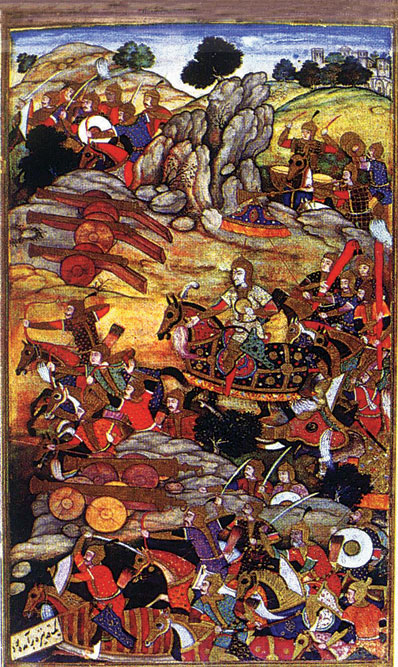
Arriving in the middle of the dry and dusty summer heats, Babur was initially unimpressed by his new kingdom, although he was thrilled by its riches: ‘The towns and country of Hindustan are greatly wanting in charm,’ he grumbled. ‘Its towns and lands are all of one sort; there are no walls to its orchards, and most places are on a dead level plain.’ This was not his only complaint. ‘There is no beauty in its people,’ he added, ‘no graceful social intercourse, no poetic talent, no understanding, no etiquette, no nobility, no manliness. The arts and crafts have no harmony or symmetry. There are no good horses, meat, grapes, melon or other fruit. There is no ice, cold water, good food or bread in the markets. There are no baths and no madrasas. There no torches, candles or candle sticks.’ Worst of all were jackfruits, which tasted like the ‘revolting intestines of sheep’. On the plus side, ‘Hindustan is a large country with lots of gold and money.’
Babur began to try and make Hindustan more like his much-missed Central Asia and built several charbagh gardens, one with a cascading fountain and a hammam— while encouraging his nobles to do likewise. The first was in Agra where he established his ‘Garden of Eight Paradises,’ with canals and raised walkways on the Persian plan, and where he planted reassuringly familiar Afghan grapes and melons.
But he had little leisure to really explore or enjoy his new conquests. In 1527, less than one a year after his victory at Panipat, Babur was forced to fight an even more formidable coalition of enemies. Mahmud Lodhi, brother of Ibrahim, had fled west into the deserts of Rajasthan following his defeat at Panipat, and there he formed an alliance of convenience with the Lodhi’s former enemy, Rana Sanga, the leader of the Rajput Sisodiya clan.
This time, the Indian army advancing towards him was much larger than that he had faced at Panipat, and Babur’s own forces had shrunk after many of his Timurid cousins had departed for Afghanistan in response to the heat, taking their winnings with them. With his back now firmly against the wall, and terrified at the prospect of defeat so far from home, Babur made a vow to give up the alcohol to which he was now strongly addicted, and announced to his troops that this would be a battle of religion. His troops, he said, were ghazis fighting for the faith against an army of infidels, even though half the troops facing him in battle were Mahmud’s Lodhi Indo-Afghan Muslims, of the same faith as themselves—and whose leader had never abjured Sunni Islam for Shiism as Babur had briefly done. At Khanua, west of Agra, Babur’s Timurids and their superb artillery again carried the day, and Rana Sanga died in battle; but the fight this time was much closer, and Babur’s losses much more substantial than they had been at Panipat.
Crossing the Indus at Attock in mid-December 1525, Babur advanced slowly forward, capturing Lahore without resistance. It was only in April that he came face to face with Ibrahim Lodhi, on the fields of Panipat, one hundred miles north of Delhi
Babur’s framing of Khanua as a battle of religion against idolatrous non-Muslims, along with the erection in Ayodhya, the following year, of a small mosque allegedly built by one of his generals on the birthplace of the great Hindu deity, Lord Ram, has led to the widespread impression in modern India, that Babur was some sort of fanatical jihadi who saw himself as the scourge of the infidels. This is clearly a misrepresentation of a man who throughout his memoirs had boasted of his love of alcohol and partying, and whose life revolved far more around pleasure than piety. Although he certainly regarded himself as an observant Muslim, and was more than happy to use religion to unite his wavering troops, in reality he was far from devout, and in his memoirs talks far more about his time spent in gardens than in mosques: indeed in the entire vast text, he hardly mentions a single place of worship, less still the act of praying in one. Least of all does he lay claim to building the mosque for which he is most famous in modern India—the Baburi Masjid in Ayodhya, though the entries for these months are now lost and it is not impossible the missing pages could have solved this much-disputed point.
Nevertheless, Babur was clearly a fairly unorthodox sort of Muslim. In 1512, when he was required to wear Shia dress as the price for Persian assistance to regain his Samarkadi throne, he had no hesitation doing so, even though this horrified orthodox Sunnis who regarded the Saffavids as dangerously heterodox and their leader, Shah Ismail, as an outright heretic. Moreover, in the original Turki text of the Baburnama, Babur does not even use the Arabic word ‘Allah’ for God, but instead talks of the Almighty at Tengri, the name of the pre-Islamic Mongol Sky Deity.
Likewise, Babur was always deeply pragmatic in his politics. Just as he was willing to ally with the Shia Saffavids in his attempt to regain Samarkand, and just as in Afghanistan he had accommodated a wide range of ethnic groups into his army— Baluch, Chagatai Mongols, Afghan Hindus, even his Uzbek enemies—so after the Battle of Kanua, Babur went out of his way to reach a political settlement with Rana Sangha’s defeated Rajput Sisodiya clan, as well as other non-Muslim land owning groups such as the Purbias of Malwa. He always attempted to conciliate those who he defeated, to share power with the vanquished and create open coalitions of self-interest with them. It was one of the most important lessons he passed on to his children.
Although Babur had spent much of his adult life dreaming of a rich empire, his triumphant conquest of India, the culmination of his life’s work, seems to have brought him little happiness. After Khanua, Babur spent much of his life on campaign, marching back and forth from Rajasthan to Bengal, from the Punjab to the banks of the Narmada. In 1528 he brought the women of his harem down from Kabul and he continued to try and order his new conquests according to his tastes, building more gardens, surveying the landscape and commissioning milestones to line the road between Kabul and Agra. He also developed a passion for mangoes. But India always remained strange and foreign to him.
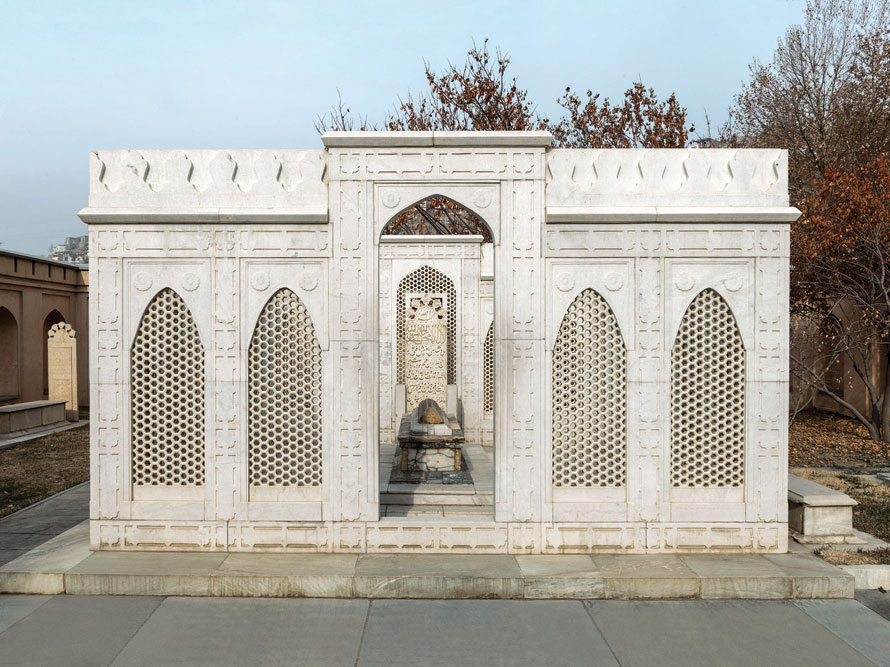
He hated the heat and hated the rains even more: ‘During the monsoon, bows cannot be used to shoot,’ he moaned. ‘Armour, books, bedding and textiles are also affected.’ Perhaps more than anything he hated the abstinence to which he was condemned by his vow to abjure alcohol before Khanua.
The longer he stayed in India the more he looked back fondly on his hard-drinking Afghan glory days. To his old friend Khwaja Kalan in Kabul, Babur asked, ‘With whom do you hold parties? With whom do you drink wine?’ ‘How can one forget the pleasures of Kabul?’ he wrote. ‘Especially when abstaining from drinking, how can one allow oneself to forget licit pleasures like melons and grapes? Recently a melon was brought, and as I cut it and ate it I was oddly affected. I wept the whole time I was eating it.’
‘I am grief-stricken at abandoning wine
Darkening my heart, I am always in a confused state.
Everybody regrets drinking and then takes an oath
But I have taken the oath and now regret it’
‘Frozen in grief, I am lost
With wine, I am cheerful and smiling.’
‘In exile this month of abstinence ages me.
Separated from friends, exile has affected me
I deeply desired the riches from this Indian land.
But what is the profit, since this land oppresses me?’
To one correspondent he even wrote, ‘Shall we return to Kabul, poverty-stricken?’ But Babur never had the chance to return to his beloved Afghan mountains. In 1530, Humayun became ill, and lay languishing in his bed with a violent fever, close to death. Humayun’s sister Gulbadan wrote that when the seriousness of the illness became clear his mother, Maham, went to fetch Humayun from his camp in Sambhal ‘and the two, mother and son, like Jesus and Mary, set off [by boat] for Agra.’
Babur had always had an uneasy relationship with his son Humayun. Throughout his diaries, Babur had shown a mixture of pride and extreme irritation with regard to his brave and intelligent but unfocused, unambitious and perennially unpunctual son; even an undertaking as important as the invasion of India was delayed by several weeks by Humayun failing to present himself on time in Kabul. He eventually turned up, three weeks late, which meant that the climax of the invasion had to take place in the heat of summer.
Babur’s grave in Kabul has recently been beautifully restored by the Aga Khan after years of war-damage, and his beloved hillside garden there has been replanted. A rather lovely craft bazaar filled with Afghan carpets and blue Herati glass now fills the caravanserai complex at its entrance. Babur would approve
Both in his rule and during his exile Humayun demonstrated the same dreamy and somewhat unreliable nature. One of Babur’s last letters was written to his son complaining about his style, handwriting and syntax: ‘Although your writing can be read with difficulty,’ he complained, ‘it is excessively obscure. Who has ever heard of prose designed to be an enigma. Probably your laziness with writing letters is due to the fact that you try to make it too fancy. From now on, write with uncomplicated, clear and plain words. This will cause less difficulty both for you and your reader.’
Now, however, Babur, was horrified to see how ill his son was. According to Gulbadan, Maham said, “Do not be troubled about my son. You are a king. What griefs have you? You have other sons. I sorrow because I have only this one.” His Majesty rejoined, “Maham! Although I have other sons, I love none as I love your Humayun.”
Babur sought the advice of a Sufi saint and was told that in order to save Humayun he should give up the most valuable thing he possessed. Babur said, ‘I am the most valuable thing that Humayun possesses… I myself will be his sacrifice. He is in extremity and I have lost the power to behold his powerlessness, but I can endure all his pain. Oh God! If a life can be exchanged for a life, I, Babur, hereby offer my life for Humayun’s.’ Babur then said his prayers and three times circled his son’s bed.
‘When his prayer had been heard by God,’ Abu’l Fazl writes, ‘he felt a strange effect upon himself, as if a fever had surged over him. Convinced that his prayer and offering had prevailed, he cried out, ‘I have borne it away. I have borne it away.”
From that moment Babur became ill while Humayun recovered. He died two months later, on 21 December 1530, at the age of only 46. He left instructions that he wishes to be buried on a high terrace in his favourite garden in Kabul where he loved to sit and admire the view.
Ironically, for a man who prided himself on his valour in the field, his greatest moment of heroism was not displayed in battle, but at home.
AMONG THE UZBEKS today, perhaps ironically, Babur is regarded as something of a hero.
‘Bobor,’ as the Uzbeks pronounce him, has an avenue and a park named after himself in the diplomatic quarter of Tashkent as well as a memorial garden and library commemorating him in Andijan, the capital of Farghana. His grave in Kabul has recently been beautifully restored by the Aga Khan after years of war-damage, and his beloved hillside garden there has been replanted. It is now a favourite place for Kabuli couples to court and for Kabuli families to picnic. A rather lovely craft bazaar filled with Afghan carpets and blue Herati glass now fills the caravanserai complex at its entrance.
Babur would approve.
In South Asia, Babur’s memory has a more complicated legacy. In Pakistan, the Mughals are remembered as heroes, but there are no monuments there associated with Babur, so there is little opportunity or excuse for public memoralising. In India, his memory is, to put it mildly, less revered. When BJP politicians today refer to Indian Muslims as “the children of Babur” they mean it as an insult.
Today, if you visit Babur’s old garden-capital of Agra, you will see the roundabouts are full of statues of the Rani of Jhansi (who led the resistance to the British) and two to Shivaji (who led the resistance to Aurangzeb.) But not one image of any Mughal emperor has been erected anywhere in the city since Independence, despite the fact that Mughal monuments bring in all of its tourist income. Although a Bahadur Shah Zafar road still survives in Delhi, for many Indians today, rightly or wrongly, the Mughals are still perceived as it suited the British to portray them in the Imperial propaganda that they taught in Indian schools after 1857: as sensual, decadent, temple-destroying invaders—something that was forcefully demonstrated at the demolition of the Baburi Masjid at Ayodhya in 1992.
The profoundly sophisticated, liberal and plural civilisation championed by Babur’s descendants has limited resonance for the urban middle class in modern India, many of whom are now, at best, deeply ambivalent about the idea of the Mughals, even if they will still happily eat a Mughal meal, or flock to the cinema to watch a Bollywood Mughal epic, or head to the Red Fort to hear their Prime Minister give the annual Independence day speech.
But Babur’s book remains in print, in a huge variety of languages and his masterpiece is more read today than ever. His Hindutva detractors can certainly pick selectively at his text to find material to bolster their case that Babur was a jihadi barbarian; but few who read the book in its entirety have ever been able resist its charm.
For although the Baburanama records extraordinary, world-changing events, today, as in previous ages, it is still read for its humanity. As much as any pre-modern text it is a reminder that while some things change from age to age, much remains universal. To read Babur waxing on the beauty of an autumn garden, or the perils of mixing drink and drugs, is still as resonant and pleasurable in the 21st century as it was in the 19th, when this translation was produced, or in the 16th, when it was written.
The Baburnama is remarkable above all for the self-portrait it provides of an extraordinary man, one of the very few in history who combined dexterity with both sword and pen. It remains one of the greatest memoirs, in any language and of any age, and presents us with one of the most complex, complete and satisfying self-portraits in world literature.
(This is the second and concluding part of an edited excerpt from William Dalrymple’s introduction to The Baburnama, translated by Annette Susannah Beveridge | Everyman’s Library | 1,032 pages | $30)

/wp-content/uploads/2025/05/Cover-War-Shock-1.jpg)





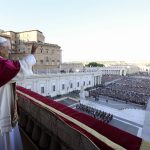



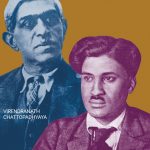


More Columns
What It Means to Have an American Pope Open
IPL suspended for a week due to India-Pak tensions Aditya Iyer
India will respond firmly to Pak escalation, Jaishankar tells Rubio Rajeev Deshpande